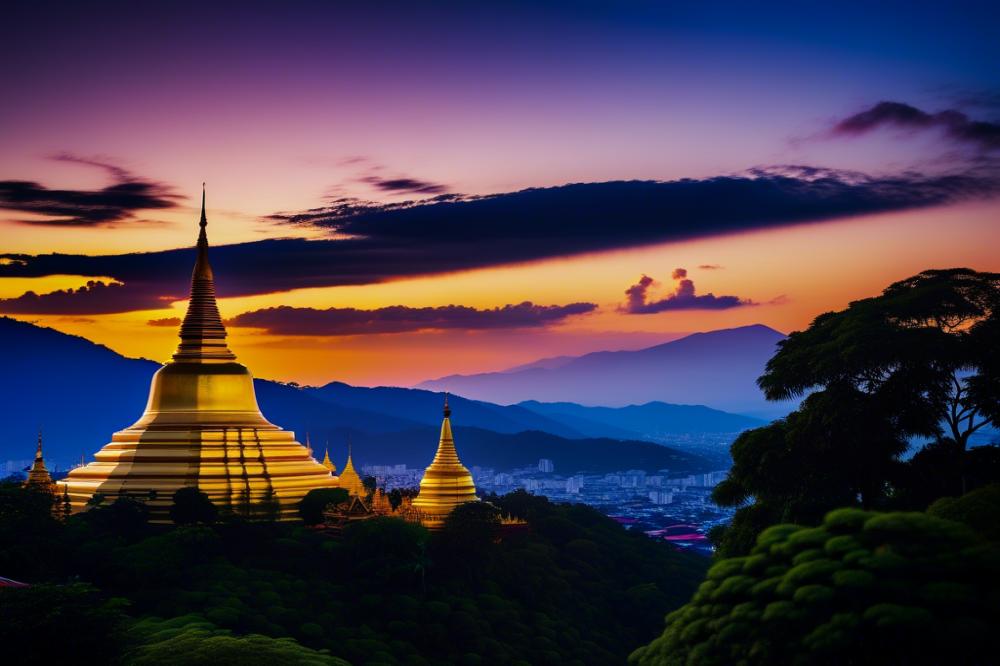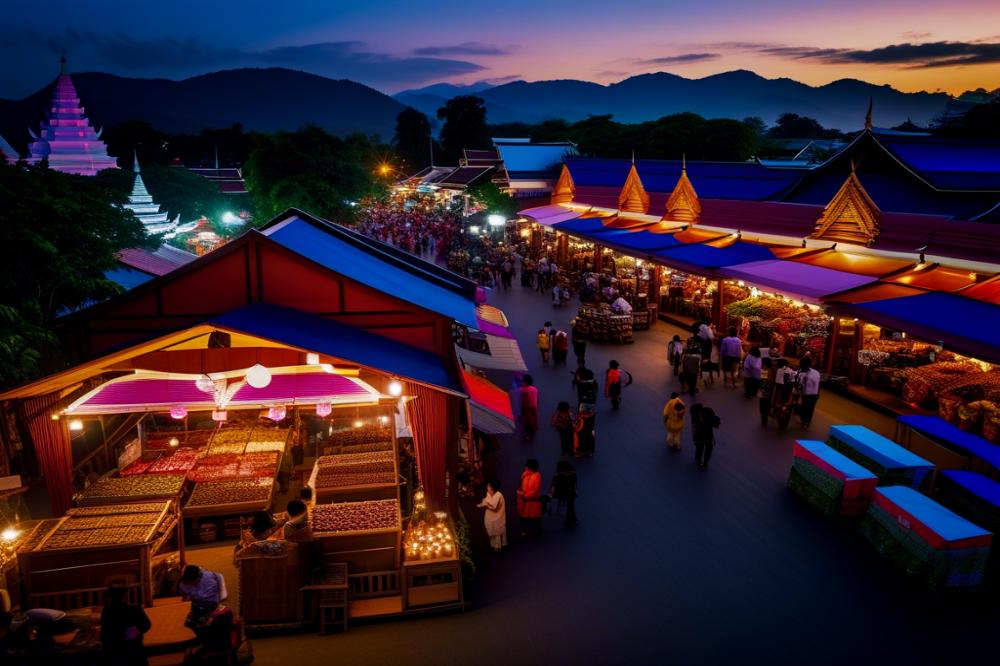fishing villages and culture on Koh Panyi
Koh Panyi is a picturesque floating village nestled in Phang Nga Bay, Thailand. This small, vibrant community thrives on the sea, offering a unique glimpse into traditional life. Known primarily for its stilt houses and charming landscape, it reflects the resilience and resourcefulness of its people.
fishing villages hold great significance across Thailand. They represent a way of life that is closely tied to the sea. Many residents rely on fishing as their main source of income. The ability to harness the ocean’s resources has shaped local traditions and community bonds. These villages, like Koh Panyi, showcase the intimate relationship between the residents and their surroundings.
A rich culture permeates the village. Daily life often revolves around seafood, which plays a central role in both diet and economy. The Islamic influence is evident in the architecture and customs of the village. Festivals, prayer gatherings, and community events highlight the warmth and togetherness of the people. Visitors are often captivated by the vibrant colors and lively atmosphere.
Tourism has brought an influx of curiosity to this tranquil locale. Despite the development, the community has managed to preserve its authenticity. Breathtaking views of limestone cliffs and clear waters surround the village, adding to its charm. This natural beauty, combined with a distinct way of life, encourages exploration and appreciation of the culture that thrives on the water.
Koh Panyi: The Floating Village

The geography of this floating village is truly striking. Nestled amidst the dramatic limestone cliffs of Phang Nga Bay, the scenery is breathtaking. Water surrounds the village, creating a harmonious blend of nature and human habitation. Colorful stilt houses rise above the sea, built to withstand the tides and waves.
Stilt houses serve a crucial function in Koh Panyi’s daily life. Families live in these elevated structures to avoid flooding and to protect themselves from flooding during stormy weather. This architectural style is not just practical; it also highlights a deep connection to the sea. Fishermen can access their boats easily, which is vital for the local economy reliant on seafood.
Historical records reveal that this village was established by Muslim fishermen over two centuries ago. These early settlers, who came from nearby Java, brought with them unique traditions and beliefs. The culture of the community is enriched by their Islamic faith, influencing everything from architecture to daily routines. Today, Koh Panyi thrives through tourism, attracting visitors who are curious about its rich heritage.
Local traditions continue to flourish even as tourism grows. People often engage in traditional fishing methods, which helps maintain their connection to the sea. The village embodies a strong sense of community, where everyone plays a role in preserving their cultural identity. Visitors can experience the warmth of hospitality and learn about the customs upheld for generations.
This floating village represents more than just a place to live; it is a living testament to the resilience and adaptability of its people. Surrounded by stunning natural beauty, Koh Panyi remains a captivating destination for those who seek to understand its unique way of life.
Culture and Community

The floating village known for its vibrant community has a rich cultural landscape shaped by its local Muslim population. Islam plays an important role in daily life here, guiding social norms and traditions. Families gather for prayers five times a day, emphasizing the community’s focus on faith and togetherness.
Daily life unfolds against the backdrop of stunning natural beauty. Residents engage in various occupations, with seafood fishing being a primary source of income. Many locals operate small boats, bringing fresh catches to the village market. This not only supports families but also attracts tourism, allowing visitors to experience the locals’ way of life.
Interactions among community members are warm and welcoming. Neighbors often stop to share stories or enjoy meals together. Stilt houses lining the shores create an inviting atmosphere, where children can be seen playing while adults converse. Such deep connections highlight the village’s emphasis on family and friendship.
Local traditions thrive amid daily routines. Festivals and celebrations showcase the rich culture and heritage of the villagers. Events like Ramadan bring the community together for feasting and prayer, fostering a strong sense of unity. Additionally, special holidays draw visitors, leading to lively markets filled with crafts and food, further intertwining tourism with cultural pride.
Important customs, passed down through generations, are celebrated with joy. The way the village comes alive during these festivals speaks volumes about its identity. Each celebration serves as a reminder of the values cherished by the community and the Islamic traditions integral to their lives. Together, they weave a narrative that is as engaging as it is culturally significant.
Fishing and Seafood

The villagers of Koh Panyi rely on traditional fishing methods that have been passed down through generations. Fishermen often use simple nets and traps to catch various types of fish. Methods like spearfishing and line fishing are not uncommon. These practices reflect the community’s deep respect for the sea and its resources.
Seafood plays a vital role in the local diet of this floating village. Many meals center around freshly caught fish and shellfish. The nutrition provided by seafood is essential for the well-being of the residents, who often practice Islam, as it meets their dietary needs and cultural preferences. Moreover, fishing contributes significantly to the local economy, providing jobs and sustaining families.
Culinary Practices
Unique seafood dishes are a highlight of Koh Panyi’s culinary scene. Popular meals include grilled fish served with spicy dips and fried calamari, which are favorites among locals and visitors alike. The use of herbs and spices reflects local traditions, infusing each dish with rich flavors. Freshness is key in the preparation of seafood, often featuring ingredients sourced from nearby waters.
Many families showcase their culinary skills during festivals, attracting both tourists and residents. Stilt houses along the water create the perfect atmosphere for enjoying these delicacies. The community’s commitment to preserving their culinary heritage enhances the natural beauty of the island. Visitors can participate in seafood cooking classes, allowing them to connect with the culture and learn about these time-honored traditions.
Tourism and Its Impact
Overview of tourism in Koh Panyi
Koh Panyi is a well-known floating village in Thailand. This small community attracts many visitors each year. Tourists flock to explore its distinctive culture and stunning views. The village offers a glimpse into life on the water. Local people engage in fishing and traditional trades. Their lifestyle is tied closely to the sea.
Attractions for tourists and activities available
A variety of attractions waits for those who visit. Visitors can take boat tours to witness the stilt houses and natural beauty of the area. Many enjoy sampling the fresh seafood served at local restaurants. Cultural performances also attract attention, showcasing traditional music and dance. Exploring the village markets is another popular activity. Tourists can purchase handmade crafts and souvenirs while interacting with the community.
Impact of tourism on the local culture and lifestyle
Tourism has changed daily life for many residents. Some locals have adapted to cater to the needs of visitors. However, this shift can also threaten local traditions. People worry that important aspects of their culture may fade over time. Islam plays a crucial role in the village, influencing social norms and customs. With the influx of tourists, maintaining these traditions becomes a challenge. The balance between modern influences and local ways of life is delicate.
Natural Beauty Surrounding Koh Panyi
The area around Koh Panyi dazzles with breathtaking scenery. Towering limestone cliffs rise dramatically from the turquoise waters. The vibrant colors of the sea and the lush greenery create a captivating landscape. Visitors often find themselves enchanted by the unique charm of this floating village in Thailand. Sunsets here are particularly stunning, with shades of orange and pink reflecting off the ocean.
Preserving this natural environment is vital. As tourism grows, the delicate ecosystems face increasing pressure. Marine life is fragile, and pollution threatens the health of the waters. The community recognizes that maintaining their surroundings supports both culture and livelihoods. Protecting mangroves and coral reefs contributes to the overall well-being of the villagers.
Eco-tourism offers exciting opportunities for sustainable practices. Travelers seek authentic experiences, and the local traditions provide just that. Guided tours can educate visitors while promoting responsible behavior. Supporting local fisheries allows them to thrive without overfishing. Engaging with the culture enhances the appreciation for the seafood and customs of the community.
Stilt houses dot the landscape, adding to the area’s visual appeal. Each house tells a story of adaptation and resilience in harmony with the sea. The strong sense of community is evident among the residents, many of whom are Muslims. Their way of life enriches the tourist experience, offering insight into their customs and rituals. Tourism can become a powerful force for positive change when it respects and uplifts local culture.
Embracing the Spirit of Koh Panyi
Koh Panyi stands out as a remarkable cultural and fishing hub in Thailand. This floating village represents the essence of traditional ways of life, where fishing is not just a job but a deep-rooted aspect of the community’s identity. Visitors to this destination get the chance to witness daily routines that have been passed down through generations.
Balancing tourism with local traditions is vital for the sustainability of the village. Increased visitors bring opportunities but also challenges. Locals strive to preserve their heritage while welcoming newcomers. This delicate relationship plays a key role in maintaining the village’s charm and authenticity.
Experiencing life in this fishing village offers more than just scenic views. It opens a window into the rich culture that defines its people. Travelers are encouraged to explore the narrow pathways, sample authentic cuisine, and interact with fishermen. Each interaction offers a glimpse into the vibrant life that exists on the water. So, take the time to appreciate what this community has to offer. There is much to learn and enjoy in this serene setting.



